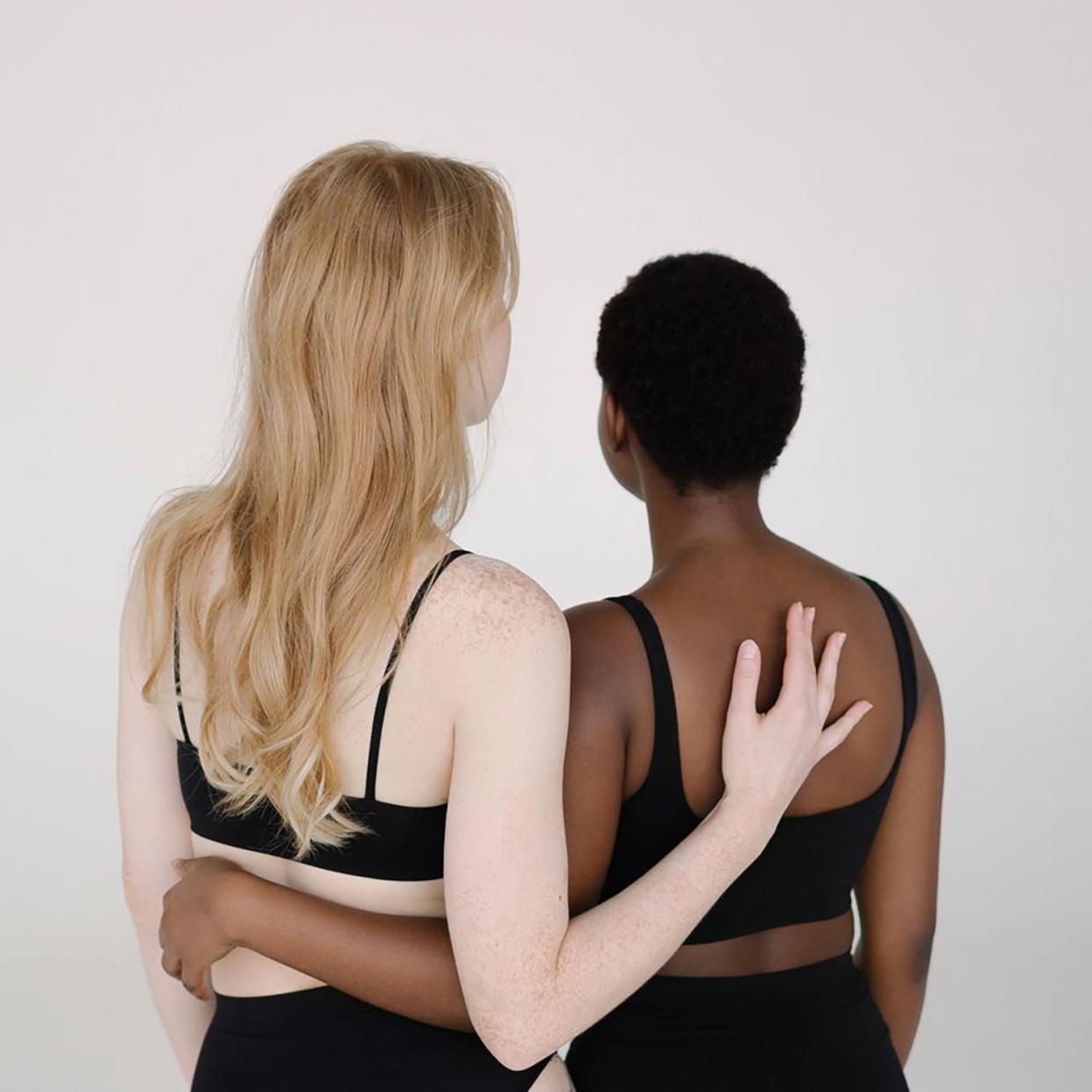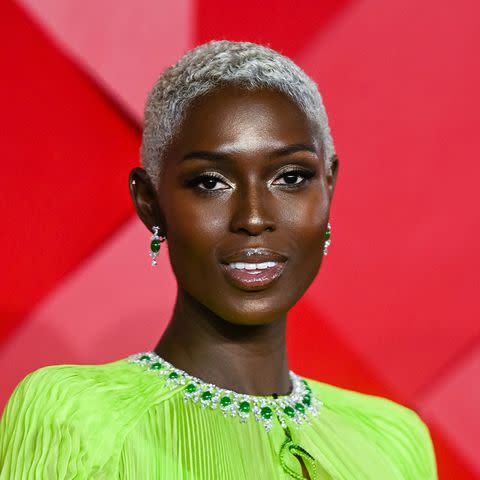How to Find Your Fitzpatrick Skin Type and Care for Your Skin Accordingly

Roman Shalenkin / Stocksy
- Oops!Something went wrong.Please try again later.
When it comes to skincare, you'll often see treatments and approaches broken down by groups—think age ranges or levels of natural oils. One of the most common groupings is race or ethnicity; for example, conditions like post-inflammatory hyperpigmentation are more associated with Black and Latinx populations, while it's well known that those who identify as white are at a higher risk for skin cancer.
Race and ethnicity are only a small part of the larger picture, however. Individuals in any given group can have a wide range of skin, hair, and eye colors—and, as such, very different needs when it comes to caring for their skin.
Enter the Fitzpatrick Skin Type Scale, a classification first described by Thomas B. Fitzpatrick in 1972 that categorizes skin by its tendency to burn or tan instead of what the person checks on the census box. Ahead, board-certified dermatologist Elyse M. Love, MD, breaks down everything you need to know about the Fitzpatrick Skin Type Scale, including what the skin types are and how they can help you assess your skin cancer risks, photo-aging concerns, and more.
Elyse M. Love, MD, is a board-certified dermatologist practicing medical and cosmetic dermatology at Gramercy Laser and Medical Dermatology in New York City.
What Is the Fitzpatrick Skin Type Scale?
The Fitzpatrick Skin Type (FST) Scale is used to categorize the spectrum of skin colors and tones found in the human population. It uses a person’s response to sunlight to create soft boundaries that often correspond with skin color, eye color, and hair color. Specifically, skin types are categorized by the propensity to burn versus tan when exposed to sunlight. This response is often a predictor of skin cancer risk, cosmetic concerns, and laser complication risks.
What Are the Fitzpatrick Skin Types?
There are six Fitzpatrick Skin Types.
Fitzpatrick Skin Type I

Samir Hussein / Getty Images
This describes a person who always burns when exposed to sunlight and is unable to form a tan. Those with FST I typically have red or blonde hair and blue eyes.
Fitzpatrick Skin Type II

JC Olivera / Getty Images
This describes a person who burns easily and tans with difficulty. Those in this group have fair skin and may notice a tan on their skin once a sunburn fades, but they are unlikely to tan without a preceding sunburn.
Fitzpatrick Skin Type III

Daniele Venturelli / Getty Images
This describes a person who tans easily but also develops mild sunburns, depending on the intensity and length of sun exposure. This category is broad and includes many (but not all) people of Italian, Greek, Spanish, Cuban, Latin, and Asian descent. Many mixed-race individuals may also fall into this category.
Fitzpatrick Skin Type IV

Frazer Harrison / Staff
This describes a person who tans easily and rarely burns. This category also includes a wide spectrum of races and ethnicities, similar to FST III.
Fitzpatrick Skin Type V

Frazer Harrison / Staff
This describes someone who very rarely burns and tans very easily. People in this category are usually of South Asian or African descent (but again, remember that race does not define skin type; response to the sun defines skin type). They tend to have brown eyes and naturally dark hair.
Fitzpatrick Skin Type VI

Samir Hussein / Contributor
This describes someone who never burns and tans very easily. The archetype for this is someone of African descent.
Is the Fitzpatrick Skin Type Scale Relevant?
As you may have been able to tell by my descriptions, racial identification crosses skin type boundaries. The Fitzpatrick Skin Type Scale provides a pseudo-objective way to stratify the risk of skin cancer and adverse laser reactions without the cultural context or biases of race and ethnicity.
For example, the risk of skin cancer is significantly different between FST IV and FST V. However, people of Asian descent can be found in both categories. Those who identify as Black may be categorized as FST IV, V, or VI, depending on their response to sunlight. FST III has significantly higher incidences of laser complications compared to FST II—however, they may appear to be the same skin tone in the winter.
In everyday practice, I screen patients for their Fitzpatrick Skin Type before deciding on laser settings. Higher Fitzpatrick Skin Types are at increased risk of post-inflammatory hyperpigmentation, laser burns, and scarring. Cosmetically, lower skin types are more likely to notice fine lines, wrinkles, redness, and sunspots with aging. Higher skin types are more likely to present hyperpigmentation.
What Your Skin Type Means
Below are my observations in my clinical practice of each skin type. This is based on my clinical experience and expertise.
Fitzpatrick Skin Type I
Because these skin types are unable to develop a tan, they often avoid excessive sun exposure and practice diligent sun protection. For this reason, those in this skin type often show signs of skin aging (fine lines, wrinkles, redness) later than those in FST II.
On the other end of the spectrum are those who either refused to accept their non-tanning fate or grew up in a family with siblings and parents who tanned easily. These individuals tend to develop numerous sunburns over their lifetime, extensive signs of photo-aging, and multiple skin cancers.
All in all, these individuals have a higher risk of skin cancer than other skin types and should undergo routine skin cancer screenings yearly. Since these individuals do not tan, they tend to tolerate aggressive settings for laser treatments, which may minimize the number of treatments necessary.
Fitzpatrick Skin Type II
These individuals classically burn and then tan. Unfortunately, the number of lifetime sunburns, particularly the number of sunburns in childhood, is a strong risk factor for skin cancer formation. Excessive sun exposure also stimulates the appearance of wrinkles, sun spots, and background redness.
These individuals should undergo routine yearly skin cancer screenings to monitor for atypical and cancerous lesions, especially if they have experienced numerous sunburns and/or used tanning beds. FST II individuals also tend to handle laser treatments well.
Fitzpatrick Skin Type III
These individuals tend to handle sun exposure well with gradual tanning. However, they can burn. Many individuals with this skin type are from coastal cities and may have a high lifetime sun exposure history.
FST III individuals should undergo routine yearly skin cancer screenings, especially if they have a history of numerous lifetime sunburns and/or a lengthy sun exposure history. For laser treatments, their skin will behave differently depending on if they are tan or not. For this reason, laser treatment should likely only be performed when the skin is not tan.
Fitzpatrick Skin Type IV
These individuals tan easily and rarely burn. They are less likely to develop melanoma than FST I-III, but non-melanoma skin cancers are not uncommon in this skin type.
These individuals should also undergo routine yearly skin cancer screenings. This skin type should only undergo laser treatments when the skin is not tanned and only with a board-certified dermatologist who is comfortable treating their skin type. Although they develop sunspots and redness similar to FST III individuals, the appropriate laser and treatment parameters are very different between the two skin types.
Fitzpatrick Skin Type V
These individuals rarely develop sunburns and tan very easily. Although skin cancer is rare in this skin type, it tends to have a poor prognosis due to late detection. These individuals should also undergo routine yearly skin cancer screenings.
Only a subset of available lasers are safe in this skin type and conservative settings should be used. Some laser treatments would overlap with natural pigmentation and potentially cause burns, scarring, white spots, and/or dark spots. These individuals tend to develop post-inflammatory hyperpigmentation very easily and may also be more prone to keloids.
Fitzpatrick Skin Type VI
Although skin cancer is rare in this skin type, it tends to have a poor prognosis due to late detection. These individuals should also undergo routine yearly skin cancer screenings.
Similar to FST V, only a subset of available lasers are safe in this skin type. Some laser treatments would overlap with natural pigmentation and potentially cause burns, scarring, white spots, and/or dark spots. These individuals tend to develop post-inflammatory hyperpigmentation very easily and it tends to be deeper than that of FST V. They may also be more prone to keloids.
The Final Takeaway
Each race and ethnicity contains a spectrum of skin tones and colors. Therefore, that is not an accurate way to stratify the risk of skin cancer or laser procedure complications. Instead, the Fitzpatrick Skin Type Scale provides a somewhat objective scale to help dermatologists stratify risk and decide treatment parameters. It characterizes people by their tendency to burn versus tan when exposed to sunlight, as opposed to their race.
Up Next:Mineral vs Chemical Sunscreen: Derms Explain the Difference

